Parents all want children who can play independently because we just need 10 minutes to drink our coffee hot, do the chores, prepare dinner etc. But did you know that there are lots of benefits for children to engage in independent play too? These include the space for creativity to flourish, the ability to self-direct their play and naturally, gain problem-solving skills in consequence.

My Definition of Independent Play
Independent play occurs when children can engage in and direct their own play without any adult interaction. It does not mean that they are in a room entirely by themselves. It would be unrealistic to expect that of toddlers as children love being in close proximity to the significant adults in their lives and would naturally gravitate to wherever they are.
For me, independent play looks like my kids playing on their own while I’m folding laundry nearby, or them creating in the art area in our kitchen while I’m preparing lunch. On a good day, everyone’s doing their own thing while being together – which in this case is a win-win!
With that said, here are my top 5 tips for encouraging toddlers to play independently.
5 Tips to Encourage Independent Play (plus 1 bonus tip!)
1.Setting Up The Environment
As adults, most of us would agree that we work best when our work space is open, uncluttered, filled with natural light and aesthetically-pleasing. Clear work spaces calm and inspire, whereas clutter tends to over-stimulate and cause stress.
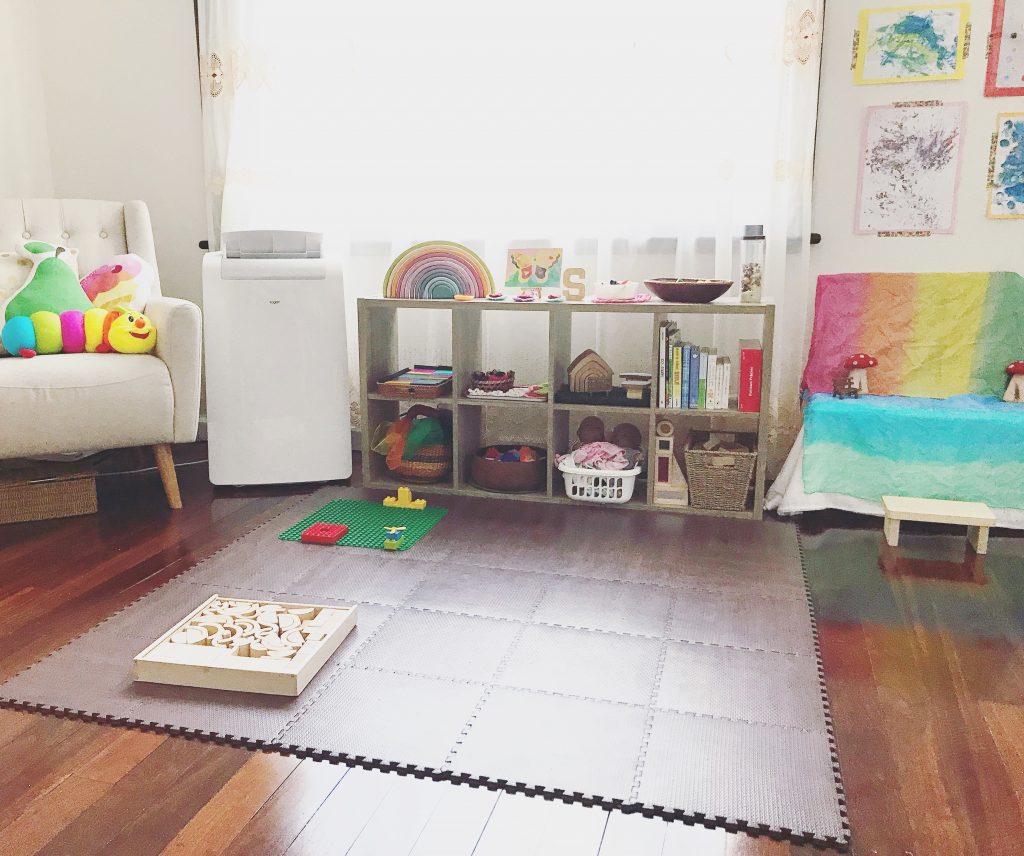
Since play is often seen as a child’s work, why should their “work” environment be any different? Their play space has the potential to evoke endless imagination, so let’s make sure that we set up an environment that enables creativity in play as much as we possibly can.
This also means equipping our children with the right tools to create. The best way to do this is with open-ended toys. Open-ended toys are toys that can be played with in a myriad of ways. These toys allow children to take the lead, and are often described as 90% child and 10% toy.
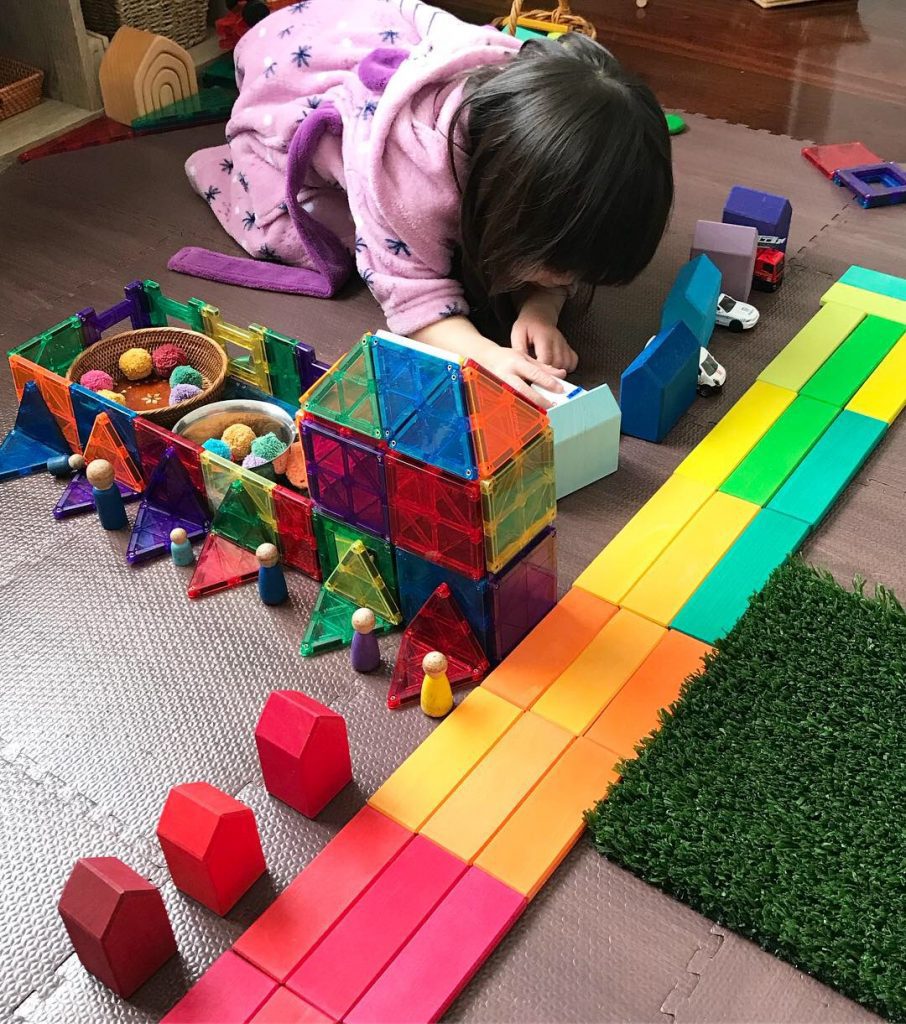
Because there is no fixed way to play with them, ten children could be given the same toy and all ten of them would find different ways to play with it based on their interests, developmental stage and natural inclinations. By this definition, the same toy can be suitable for a baby, a toddler, a preschooler and even beyond.
Psst… I have created the Playful Parent Toolkit as a FREE resource to help you TAKE ACTION and encourage more independent play with your toddlers. It includes a recommended list of more than 50 open-ended toys that I have personally curated. Click the button below to get a copy of it instantly!
2. Toy Rotation
Have you ever had one of those exasperating days where you stand in front of your closet and think you have absolutely nothing to wear – even though the closet is bursting with clothes? Well, I have. Too many choices can sometimes be overwhelming and it’s why some of us have difficulty answering the question, “where do you wanna eat?”
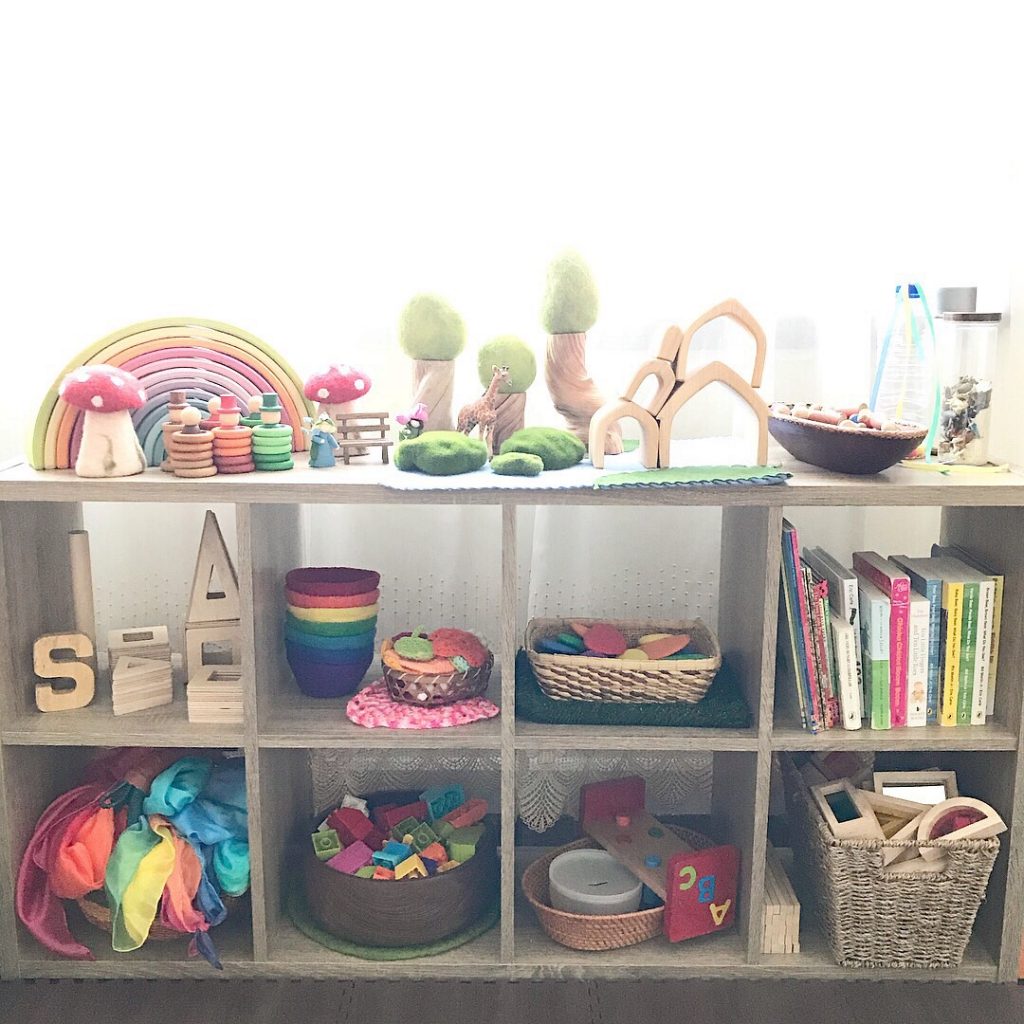

Similarly, when it comes to play, less is always more. Children can get overwhelmed when they are bombarded with too many options. Rotating toys that are within eyesight and easily accessible limits their choices, but also ensures that toys remain fresh, exciting and relevant.


Rotate the toys according to the child’s interest. For example, magnetic tiles and peg dolls are never rotated away since they’re really popular with my kids and are played with every single day. Other toys are rotated out based on their disinterest. If I see that there have been a few things that haven’t been touched for a while, they’re replaced with “new” things from the toy storage cupboard.
3. Follow Their Interests
This is all about knowing your child. Being familiar with your children’s abilities and interests enables you to provide materials and set up activities that they will automatically gravitate to and want to engage with.
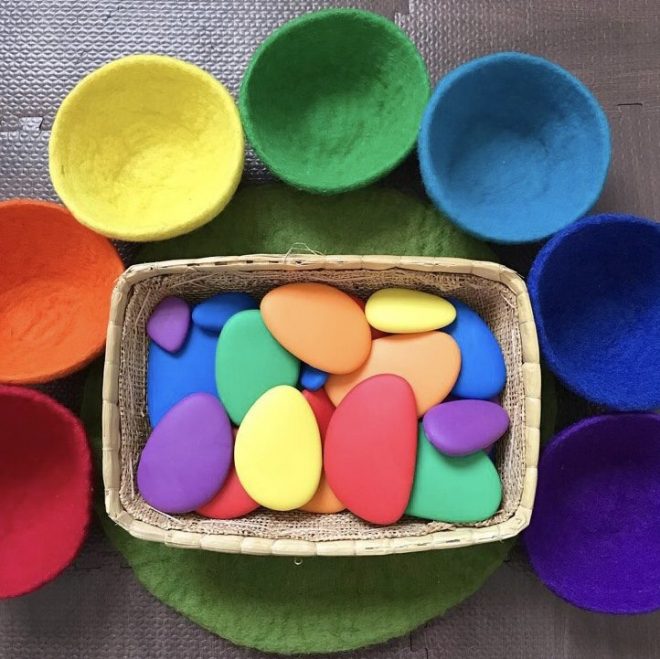

In your observations of them, listen to what their conversations are centred around and what their predilections are – you will start to notice patterns. These clue you in on the kinds of activities that would be right up your child’s alley. For instance, this picture above is an activity I set up for my toddler when she was into colour sorting. When they are motivated by interest, learning will naturally occur.
This applies even if your child is interested in only ONE thing (e.g. cars) or has commercially-inspired interests (e.g. Peppa Pig). Centering their play on things that they love will help keep them engaged for a longer time. This could be creating a small-world in which Peppa and her friends are playing in the park, or a race car track that circles around the entire play room.
If you would like to get your hands on some worksheets that will help you identify, plan for and extend on your child’s interests, click on the button below.
4. Trust That Children Can Direct Their Play
Oftentimes as grownups, we approach children’s play time through the lens of our adult biases. We assume to know better what our children’s attentions should or should not be directed towards. While this may be true, their play should, as much as possible, remain uninterrupted.
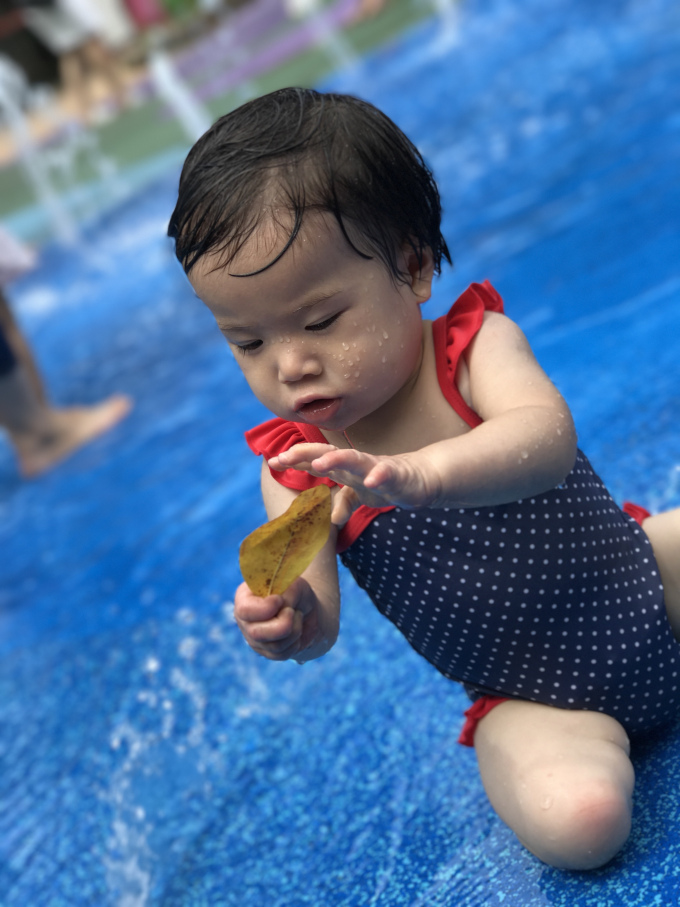

Interjection does quite the opposite of help. It short-circuits their play by leaving them in doubt of their own ability to direct it. When you tell them how to play or give them too many instructions, they will eventually always expect you to be there to set up and develop the play for them.


I know this sounds counterintuitive, but it truly is one of the best strategies for encouraging your child to play more independently: play with them without playing FOR them.
Let them make the decisions – empower them with prompting open-ended questions to extend the play at hand. Help them work through frustrations, don’t fix problems for them. Free rein over their play allows them to stretch their creative muscles through active problem-solving.
5. Engage in Play With Your Child
Be 100% present with your child when you play with them. Whether it’s for 3 hours or 30 minutes, focused and intentional play with your children can make all the difference. It’s about quality, not quantity!


Children can definitely tell if your mind and body aren’t totally connected to the moment. I’ve found that quality time with my kids at the start of the day leads to better independent play for the rest of it. I usually spend this time demonstrating the possible uses of the multiple open-ended resources we have, as well as reading the books they love. Children model after the things that we do or say. All the time spent watching me and doing as I do builds the skills and confidence to engage in more sustainable independent play.
Bonus Tip
6. Set Up a Home Art Space
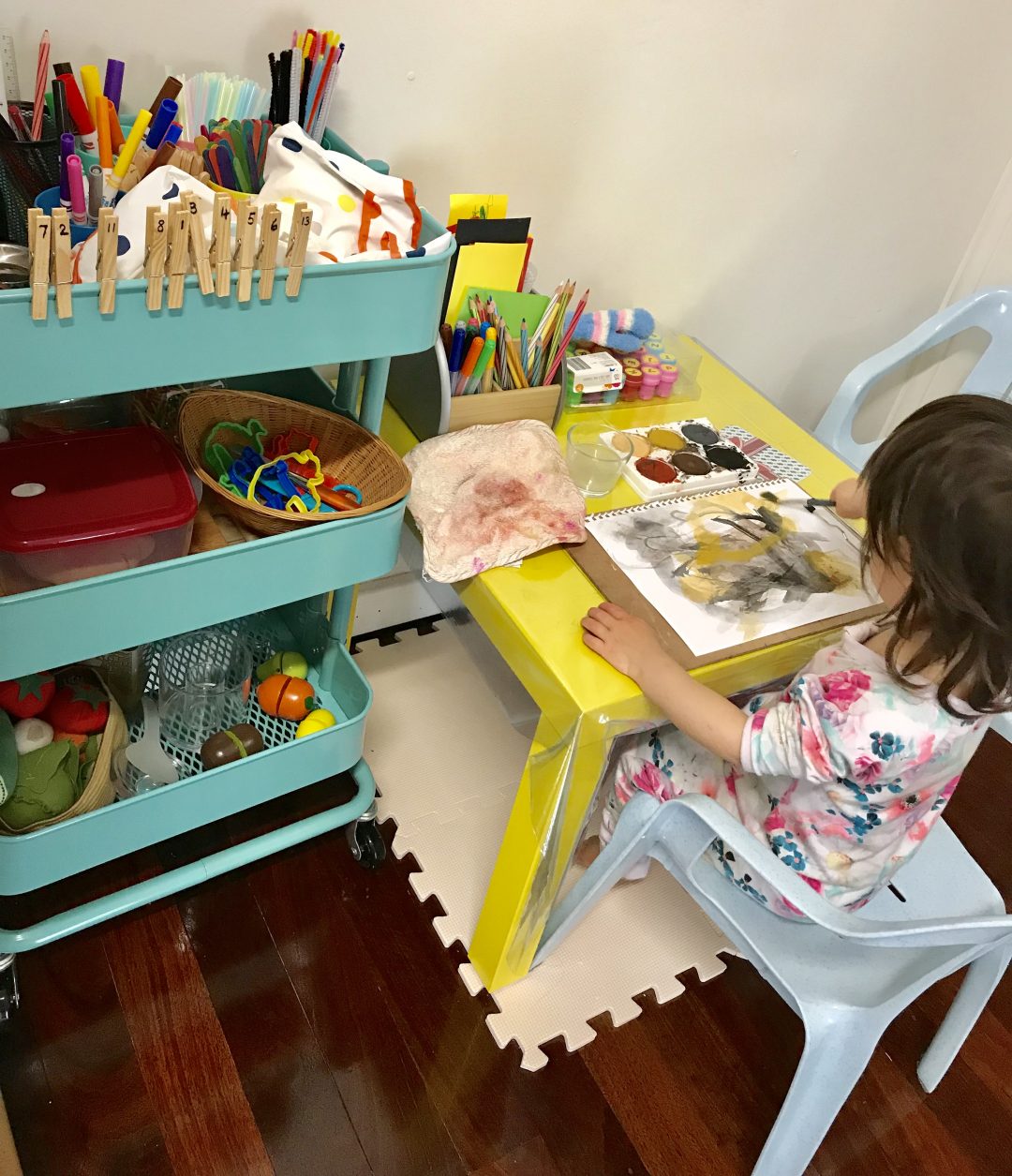

I am including this as a bonus final point because for me personally, having a home art space has made all the difference and has definitely taken my children’s independent playing skills to the next level. My older children are here several times throughout the day creating and making independently and they have developed so many other wonderful skills in the process.
I’ll concede to having more mess in the house but I do not exaggerate when I say that it is WORTH all the hours of independent play that has since occurred as a result of setting up this creative space.
Conclusion
All this having been said, we must be mindful to manage our expectations. Don’t be discouraged if your child’s playtime doesn’t look like someone else’s – remember that every child is different and will learn to play independently at a different age.
While it can sometimes be tiring to be so intentional in facilitating playtime, it is ultimately so, very rewarding.
Remember, child’s play is serious work!
Want more?
✓ Tips & Strategies for raising creative, independent and engaged children in a play-centered home.
✓ Lists & Checklists of my recommended toys, art supplies and resources.
p.s. If you enjoyed reading this blog post or found any of it helpful, I’d be so grateful (and I’m sure your friends will be too!) if you shared it via one of the social media icons down below. Thank you!
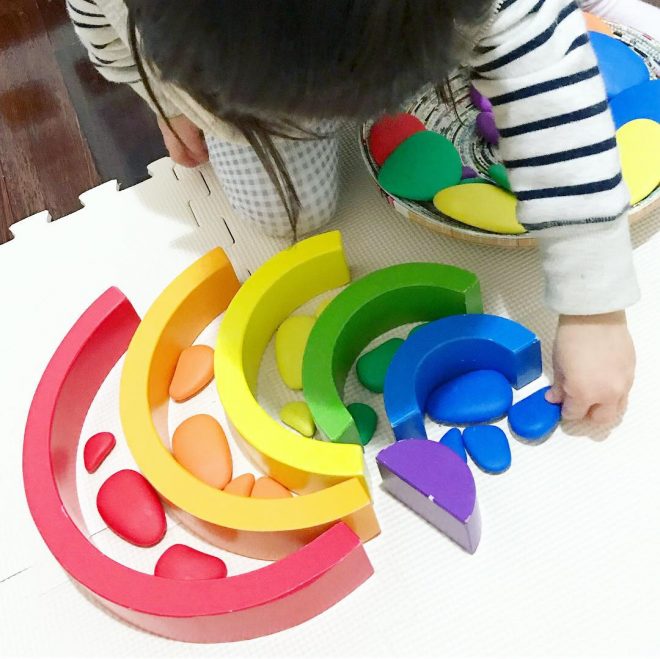


I really liked the reminder to keep their ”workplace” orderly and uncluttered and that less is more and allows for creativity. I like the idea of paying more attention to what they aren’t playing with as much so you can rotate a few toys to keep play fresh. Thank you for fresh ideas, we appreciate it. Your children are adorable 😊
Oh thank you so much for taking the time to leave me such encouraging feedback! I truly appreciate it and i’m so glad you found it helpful 🙂
Hello, the color sorting activity on this page really caught my eye. Can you tell me what supplies you used to make this. Thank you
Hi, this is all so helpful and encouraging!!
And are you able to fix the playful parent toolkit link download? It does not work. Thanks so much Jules! 🙂
Hai! Just read your blog and it’s very much inspiring. Thank you for the article ♡
I want to ask 1 question, do you think it is ok if i put the play space and art space in the same area? Because our house is somewhat small and we dont have rpoms for 2 separated areas. Thank you!